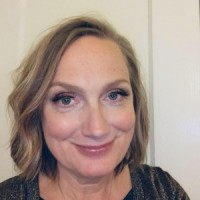Hampton Carson and His Scientific Network—Part II
Several weeks ago, I introduced you to Hampton L. Carson, a geneticist who donated his papers to the American Philosophical Society. We touched on his life story, achievements, and interactions in the field of Drosophila research (i.e. studying the genes, mutations, and evolution of a type of fruit fly). This blog post will take a deeper dive into Carson's papers and explore the ways his scholarly network shared ideas, influence, and occasional aggravation with each other. As we explore the variety of documentation available in Carson's papers, I hope it will inspire future research, should anyone like to learn more about a distinguished "fly guy."
Carson was a prolific author and taught at the University of Hawaii at Manoa until age 71. He served as an advisor and mentor for many up-and-coming geneticists, often keeping in touch with them throughout their careers. His collegial “lineage” enabled complementary work that began in Carson’s laboratory to continue, informing later Drosophila research, and fostering collaboration between those who spent time at UH as students, instructors, research fellows, and/or colleagues on sabbatical. His lab also served as a stock station for Drosophila specimens and participated in a larger framework of distribution points (including the University of Texas at Austin), which supplied the living insect “equipment” on which scientific experiments were based.

Given his expert knowledge of the field, Carson was often called upon to review grant proposals, especially for the National Science Foundation. This gave him an opportunity to observe developing trends in the Drosophila community through funding requests and provided indispensable support for research happening across the US. Along the same lines, Carson seems to have reviewed as many articles as he wrote, both formally in peer review, as well as informally with colleagues seeking his opinion. Publishers also requested ideas for books and advice on developing the genetics literature to accurately reflect current breakthroughs and general trends.
As with many professors, Carson was the recipient of job notifications from fellow academics looking for promising students in the field. Through the review of these postings, one can track development of genetic labs across the country, as well as changes in their methodological approach, staffing roles, and languaging of the profession. Conference planners also consulted with Carson on possible topics and speakers for professional gatherings, which shaped ongoing scientific discussions and dissemination of current research.

In addition to these scholarly pursuits, Carson facilitated the travel of colleagues to Hawaii whenever he could. He and his wife Meredith acted as ambassadors to scientists from around the world, who often returned the favor and assisted the Carsons with research trips to Latin America, Australia, China, and other destinations. The Carsons were fond of their adopted home and their ongoing commitment to sharing the island experience is evident through the donation of their small vacation house/observation station to the University of Hawaii, to provide support for ongoing research in the field.
In retirement, Carson became increasingly involved with environmental conservation efforts in Hawaii, Central America, the Pacific Rim, and on the mainland (the latter through preservation of the Endangered Species Act). This broadened Carson’s range of contacts to government officials on the state and federal level, as well as to agencies managing national parks, which could be potentially affected by legislation.

So while the term “influencer” had not yet been coined, it certainly seems to be appropriate for Carson. Given the rich dialogue and knowledge sharing in his papers, we decided to keep Carson’s correspondence with its numerous enclosures intact as one series. While it has been the tradition at APS to separate such materials into different series, I hope to provide a more holistic view into Carson’s written “conversations,” as this is how he and his colleagues actually communicated ideas to each other, on the cusp of email communication, online platforms, and social media.
I think what affected me most when sorting Carson’s correspondence was observing the close friendships between the writers. Carson proved himself to be a real gentleman scholar, who used letters as a vehicle to share findings, engage in spirited dialogue and debate, and stay connected with colleagues around the world on both a personal and professional level. Some of his unique character still lingers in these letters, which became increasingly philosophical later in life. In turn, the readers of these documents can bear witness to his scientific network and in a way, participate in it—by relating their own work through the lens of what has gone before them. I believe this is what motivated Carson to donate his papers to the APS: to continue the dialogue on a certain level, through a treasure trove of documentation, often signed with his signature “Aloha.”



